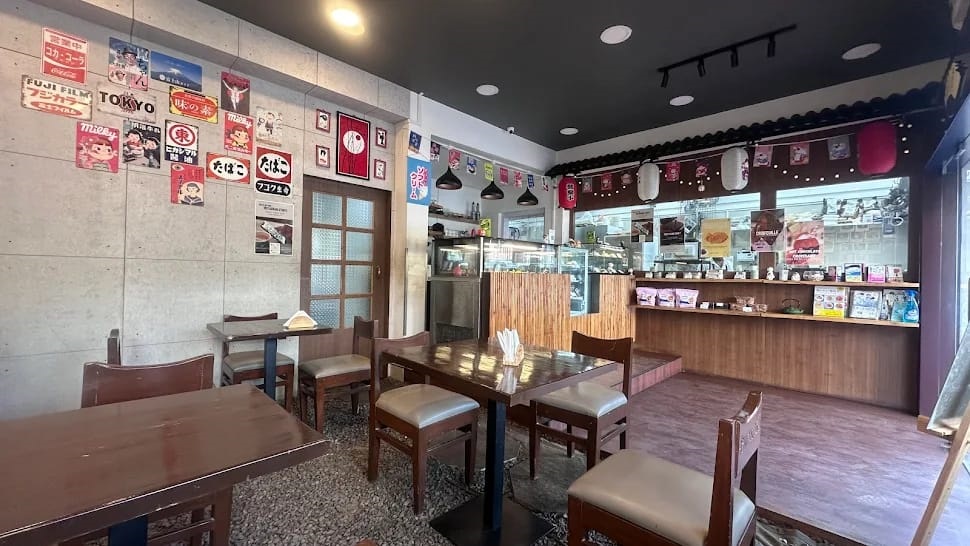With Studio Ghibli ruling social media and matcha lattes turning mainstream, Japan’s quiet charm has found a home in Goa. The Goan explores how Chef Brainard Colaco brought a slice of Tokyo café culture to Panaji with Momoka, a dessert bar and Kissaten that’s part art, part obsession, and entirely delicious

With Studio Ghibli capturing imaginations online and anime shaping the way we watch, taste, and even decorate, Goa has a new Japanese heartbeat. Chef Brainard Colaco has brought a slice of Japan to Panaji, crafting Momoka, a Dessert Bar and Kissaten, where matcha, mochi, and meticulously plated sweets meet the warmth of Goan hospitality. Every corner tells a story, every dessert feels like a scene from a Ghibli film, and every visit is a journey across continents without leaving the city.
Margao to Momoka
“I’ve been running restaurants across India for a long time,” Brainard begins. “I had a successful business in Margao, Mog Cake Studio, but it relied too much on me. I sold it and moved to Bangkok. That’s where the idea for Momoka was born.”
The Bangkok spark
Bangkok was the spark, but Goa kept calling him back. “After a year there, I realised I wanted to open Momoka here. I knew the market, I knew the people. Goans care about quality over quantity. They notice the little things. That’s exactly the audience we needed.”
The perfect space
Momoka officially opened in 2023, bringing Brainard’s vision of a Japanese tea house and dessert bar to the heart of Panaji. He chose the city for its central location. “Being from Margao, I wanted a place central enough for people from North and South Goa. It took months to find the right space, but when we did, it felt like destiny.”
Japan meets Goa
Inside, the Japanese influence is everywhere, but it’s never forced. “Momoka is India’s first Kissaten, a Japanese tea house. Our décor, the little trinkets, even the KitKat inspired items, all of it comes from years of travel in Japan. I’ve been in and out of Japan for 7, 8 years, and I was also part of Nestlé’s team ideating food trends across Asia. Trends start there now, not Europe. Anime, Japanese culture, K-pop, India is catching the wave, and we ride it too,” he said.
Western dishes, Japanese soul
Momoka focuses on Yoshoku, Western-style dishes with Japanese ingredients. “I stick to what I know best, and I do it well. One strong thing is better than spreading myself thin,” Brainard said.
Precision and teamwork
Everything runs on systems, and the team makes it happen. “I can’t do this alone. The concept is mine, but the execution is theirs. Product quality, service, presentation, it’s all designed to be repeatable perfection.”
Crafting perfection
Perfection takes time. Desserts can take weeks of trial and error, testing textures, flavours, even temperature. Mochi is one example. “We started experimenting with traditional Japanese mochi, which is soft and chewy. I wanted to make a chocolate mochi, but it turned into a brownie. It was a happy accident, and now it’s one of our best-selling desserts,” Brainard said.
Liam’s Teddy Bear
Liam’s Teddy Bear, now the most photographed dessert at Momoka, began with something simple and personal. “The Teddy Bear mould was first developed by a few chefs I knew, one in London, one in Japan, and me in Bangkok,” Brainard explained. “We had an NDA with the company, so those moulds were exclusive to us.”
A sweet tribute
When he moved to Goa to open Momoka, he wanted the dessert to carry a piece of home. “My little nephew, Liam, absolutely loves teddy bears. I was brainstorming for a name, and it just clicked. We called it Liam’s Teddy Bear.”
What started as a playful tribute turned into a sensation. “I never expected it to go viral,” Brainard said with a laugh. “It was part luck, part timing, and a lot of love.”
Listening to the customers
Customers shape the menu too. “Yes, it’s extremely important to get customer feedback,” Brainard said. “So what we did was build an algorithm-based chatbot that connects directly with our customers. Whenever someone posts a picture of our desserts on their stories, we give them a free gift from the menu. After that, we ask them for their honest review, what they liked, what didn’t work, what could be better. We collect a lot of insight that way.”
Refining every detail
He added that the feedback loop doesn’t stop there. “Before we launch a new dessert or product, we test it with our regulars, people who visit once or twice a week. They try it first and tell us what they think. It helps us refine every detail before it hits the menu. About 80% of the flavour profiles, the sweetness, and the umami-ness come directly from our customers, while the concept remains ours.”
Ingredients with integrity
Ingredients are treated with the same care. “Our matcha comes straight from Japanese plantations. Udon noodles arrive frozen and authentic. Chocolates are sourced from Belgium. If my kids wouldn’t eat it, I won’t serve it.”
Blending cultures
Even with its Japanese heart, Momoka nods to its Goan roots. “During festivals, we blend local flavours with Japanese desserts. Diwali mooncakes, marzipan plum cakes, it’s a celebration of Goan and Japanese creativity.” But the foundation remains Japanese, precise, playful, perfect.
Looking ahead
Expansion is in sight, Pune, Mumbai, Bangalore, yet Brainard calls it proudly a Goan brand. “We may have started in Thailand, but this is our home. Authenticity matters.”
Advice for young chefs
For young chefs, his advice is simple. “Learn the basics, respect the system, and let passion drive you. Work, absorb, then create. Goa has opportunities, especially in food and tourism.”
A bridge between worlds
Momoka connects continents and cultures, childhood joy and culinary craft, anime dreams and real-world taste. “It’s a bridge,” Brainard explained, “linking all of that together.” With him at the helm, the experience feels intentional, precise, and unforgettable.